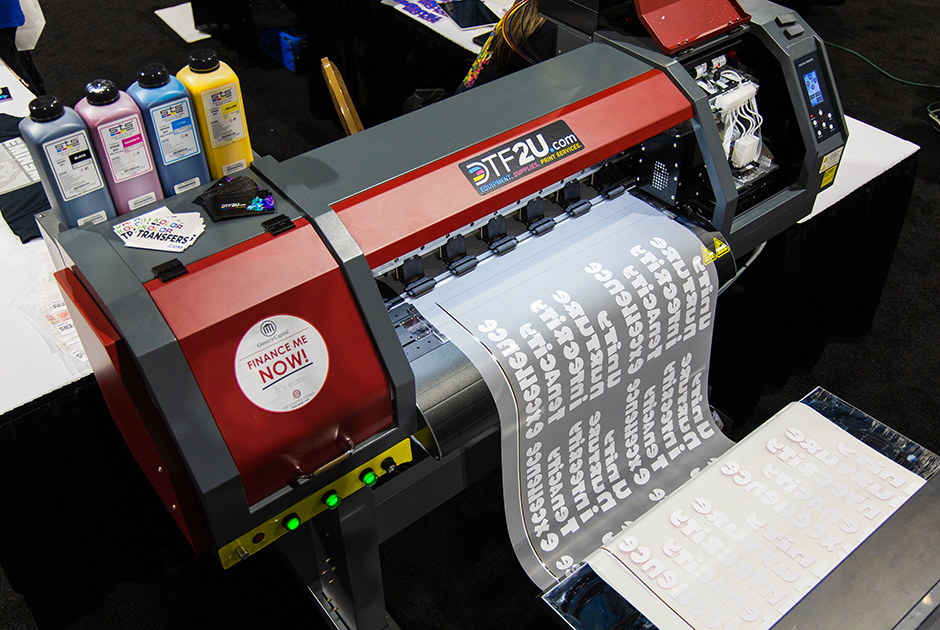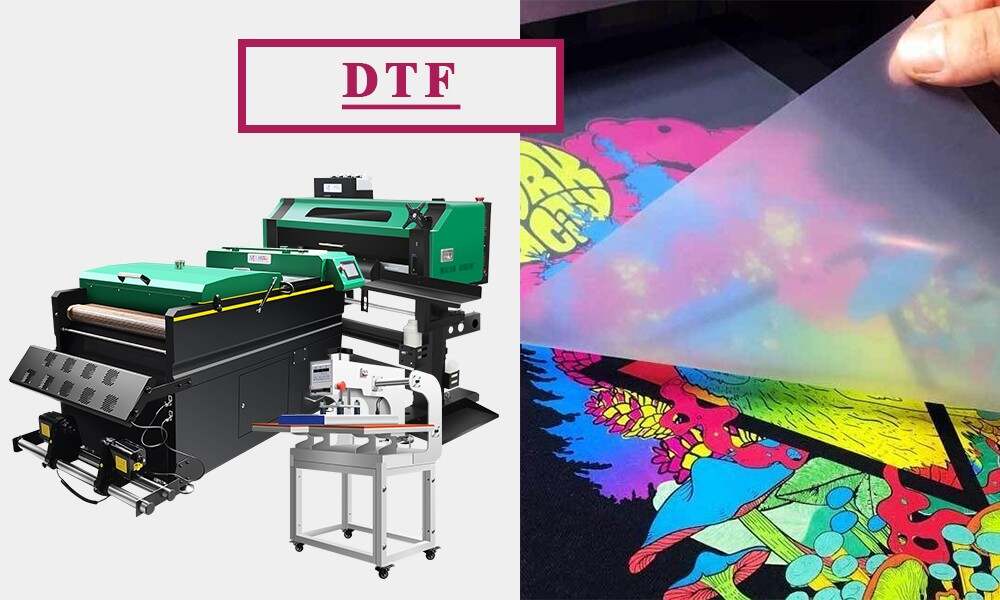Grasping DTF Printing: Tips and Tricks for Getting Vibrant and Sturdy Prints
Worldwide of fabric printing, attaining long lasting and dynamic prints is a desired skill that can elevate the top quality of your outcome. Mastering DTF (Direct to Movie) printing calls for a blend of technical expertise, precision, and attention to detail. From picking the right materials to make improvements print settings and improving post-printing ending up techniques, there are various variables that can influence the result of your prints. Understanding how to navigate these complexities can make all the distinction in between a mediocre result and a genuinely remarkable one.

DTF Printing Essentials
For those new to the world of textile printing, understanding the basics of DTF printing is necessary to grasping this ingenious method. Direct to Movie (DTF) printing is a modern technique that involves moving styles from a special movie onto different textiles making use of a warm press. Unlike conventional methods like display printing, DTF provides advantages such as vivid colors, intricate describing, and the capability to print on varied materials like cotton, polyester, and blends.
The procedure begins by publishing the style on an unique DTF movie using a suitable printer with CMYK or CMYKW ink sets. As soon as the style is published, it is then healed with a warm press to create a durable and long lasting print. DTF printing is known for its capacity to replicate complex styles with high accuracy and color precision, making it a popular selection for companies looking to create custom-made apparel, advertising items, and a lot more.
Choosing the Right Materials

The glue powder acts as a bonding representative between the published style and the fabric, so it must have solid bond homes to guarantee a resilient and resilient transfer. By meticulously selecting the best products for DTF printing, printers can improve the top quality, vibrancy, and durability of their prints.
Optimizing Publish Settings
When aiming to accomplish the finest outcomes in DTF printing, meticulous attention to maximizing print setups is essential for making sure specific and top quality transfers onto textiles. One essential element to take into consideration when maximizing print settings is the resolution.
One more vital setup to optimize is the print speed. Finding the best balance between speed and quality is recommended you read vital. While boosting you can try these out the rate can boost performance, it might endanger the last print's quality and shade saturation. Explore various speeds and observing the outcomes can assist identify the optimal setting for each print job - DTF Printing.
In addition, make improvements shade accounts and making sure correct color administration are vital for accomplishing consistent and accurate shades across different prints. By adjusting shade setups and accounts, printers can reduce shade inconsistencies and create uniform outcomes, improving the overall print top quality and client fulfillment.
Preparing Artwork for DTF Printing
To make certain ideal results in DTF printing, careful attention to information is necessary when preparing artwork for transfer onto fabrics. Begin by selecting high-resolution photos to maintain quality and sharpness in the last print. Vector graphics are chosen as they can be conveniently scaled without losing top quality. Convert the art work to CMYK color setting to ensure that the shades translate properly from screen to print. Readjust the shade levels and comparison as required to improve the vibrancy of the layout. When adding message to the art work, choose web font styles that are legible and appropriate for the desired size. Keep in mind to mirror the last design prior to publishing to guarantee that it moves correctly onto the garment. Furthermore, take into consideration the fabric type and shade when selecting the artwork, as these aspects can affect the final look. By adhering to these steps and paying very close attention to the details, you can prepare art work that is enhanced for lively and durable DTF prints.
Post-Printing Finishing Methods
Implementing effective post-printing finishing strategies is critical to boosting the longevity and aesthetic charm of DTF prints on textiles. Once the printing procedure is full, applying warm to the printed design is crucial.
Once the movie is removed, the print might call for extra healing time to additionally establish the ink into the textile. This step aids enhance the washability and longevity of the print, ensuring it can hold up against multiple clean cycles without fading or breaking.
In addition, trimming any type of excess film around the style can offer the final print a expert and tidy look. Making the effort to properly complete DTF prints post-printing can significantly affect the overall high quality and long life of the fabric design.

Final Thought
Finally, grasping DTF printing needs a thorough understanding of the basics, choosing proper products, optimizing print setups, preparing art work effectively, and making use of post-printing completing methods. By adhering to these methods and tips, one can achieve sturdy and vivid prints that meet their desired quality standards. Consistent practice and attention to detail are vital in accomplishing effective results in DTF printing.
From choosing the best materials to tweak print settings and refining post-printing finishing techniques, there are numerous factors that can influence the end result of your prints. Unlike typical approaches like display printing, DTF uses advantages such as vibrant colors, detailed describing, and the capability to print on diverse products like cotton, polyester, and blends.
As soon as the layout is published, it is then cured with a warmth press to develop a resilient and long lasting print.When aiming to attain the ideal results in DTF printing, meticulous focus to maximizing print settings is essential for ensuring high-grade and exact transfers onto textiles.In final thought, mastering DTF printing calls for a detailed understanding of the fundamentals, selecting ideal materials, maximizing print setups, preparing artwork properly, and using post-printing finishing methods.
Comments on “DTF Printing Demystified: Every Little Thing You Required to Know About Direct-to-Film”